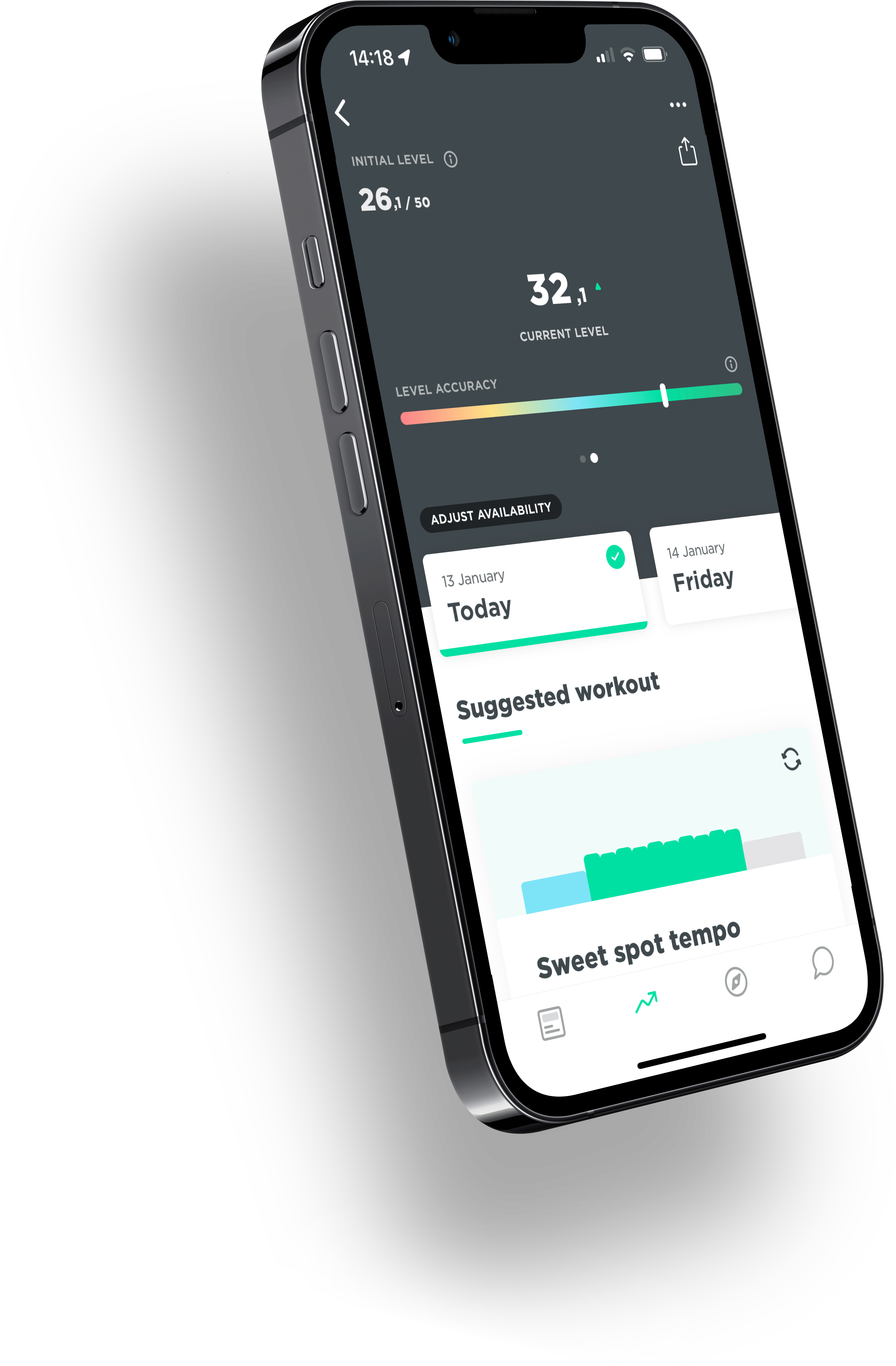As president, treasurer, honorary member and, for now, sole member of the Frequency First Club (FFC), it is my pleasure to welcome you to this club. Before we can officially make you a member of this club, we would like to share with you our core values. If you agree with these, you are most welcome. We don’t have a complicated ballot, we don’t even charge a membership fee. Everyone is welcome as long as you subscribe to our mission.
By Jim van den Berg, Founder & CEO of JOIN Sports

What do you get in return?
Of course, a membership should also give you something. So what do you get in return? A lot, but your membership is not a shortcut to optimal fitness! It is, however, the key to never having a huge decline in your fitness ever again. It’s a philosophy you won’t see until you see it through. It is a wisdom that you can actually apply to everything in life. It’s beacon that lets you make the right choices and makes the jungle of tips and advice so much clearer all at once.
The mission
The mission of the Frequency First Club is for as many athletes as possible to benefit from the insight that you must first get the frequency of your workouts right. Only after that is volume important and finally we should care about intensity. Of course, this does not mean that we, at the FFC, are the club against volume or intensity. Those clubs undoubtedly exist too but you should not be with us for that. We also certainly don’t want to pretend that volume and intensity don’t matter, we only stand up for sequentiality and that is: Frequency First.
7 reasons for Frequency First
To reinforce our mission statement, here are not our 95 theses, but a more concise 7 reasons.
- The promise of training is getting better. You unbalance a system, giving it the stimulus (training stimulus) to better arm itself against this the next time. This process occurs only during rest after training, but will gradually disappear if the rest is too long. Training once a week can be a pleasant pastime, but after 6 days of rest, any training effect is almost gone. Therefore, you should first train more often and then train longer.
- You need to recover longer from long hard workouts. This allows you to train less often and less intensively. We see this effect with pros who cycle better power at the beginning of the season than at the end*. After a period of mostly training and few races, especially the power outputs after fatigue (after 2000kJ) are much better than after periods with many races.
- Training 3 times an hour has more effect than training 3 hours once a week. Indeed, a study with recreational cyclists found that a 10-week training period with 2-3 times per week of very short heavy HIT training had as much effect on endurance as nearly 7 hours per week of low-intensity work alone.* With a total of 1.6 hours of HIT training, the same effect was achieved as 6.8 hours of low-intensity work on a 3-hour test. This test then involved cycling at 50% of VO2max for 3 hours and looking at the extent of fatigue by looking at increases in heart rate, oxygen uptake and lactate, among other things. What was found is that both groups were equally improved.
- So the above point does not show, for the poorly understood, that you can substitute volume with intensity. After all, the improvements according to this training approach after 10 weeks were nothing to write home about. So the trick lies in combining longer workouts with intense workouts and there are no shortcuts for training toward long goals. However, it is simply true that if you have to choose between 3 times 1 hour of training or 1 time 3 hours, we at the FFC, recommend the former.
- Working out more often is easier to fit into your schedule. You can always cram an hour of training in somewhere, whereas long workouts put a strain on your schedule, family and work.
- Training more often creates a rhythm, a cadence to which the rest of your environment can much more easily tune in. Mom or dad who suddenly disappears for part of the day at totally random moments will encounter much more resistance than the more frequent cyclist who finishes the workouts on a regular wave.
- If you train more frequently, you are more likely to pick up the bike again. After all, exercise is addictive, and unlike most other addictions, this is one you can grow old with just fine. Take advantage of these happiness hormones and let the serotonins, endorphins and dopamines help motivate you for your next workout.
How often is enough?
By now, you must have become convinced of our credo and we understand that you are now thinking; “how often, is often enough”. We recommend that the baseline for every cyclist should be 3 times a week. If there is more room per week, then the next step is to extend 1 of those 3 workouts. But before that happens, try not to maintain that one long endurance workout precisely during the winter months. Instead, try to put the frequency of 3 times per week first and foremost. Again, with good endurance training and training 3 times a week you will make much greater strides, but remember; we at the Frequency First Club say: Frequency First!
How do you become a member?
Simply by embracing our credo and putting it into practice. Because as Aristotle put it; “We are that, which we repeatedly do”. So all you have to do is do it and of course a tag on social media and on Strava is appreciated. You are not doing this for us, but for yourself. This way, we enlightened minds, who see through it, see that we are among like-minded people and of course that is a nice feeling.
So JOIN the Frequency First Club and join our movement with the hashtags: #joincycling #frequencyfirst #FFC. Also become a valued member of our Strava Club and stay tuned on everything, including events, challenges, and cycling tips.
Sources:
*James Spragg, Peter Leo & Jeroen Swart (2023) The relationship between training characteristics and durability in professional cyclists across a competitive season, European Journal of Sport Science, 23:4, 489-498, DOI: 10.1080/17461391.2022.2049886
*Matomäki P, Heinonen OJ, Nummela A, Laukkanen J, Auvinen E-P, Pirkola L and Kyröläinen H (2023) Durability is improved by both low and high intensity endurance training. Front. Physiol. 14:1128111. doi: 10.3389/fphys.2023.1128111


